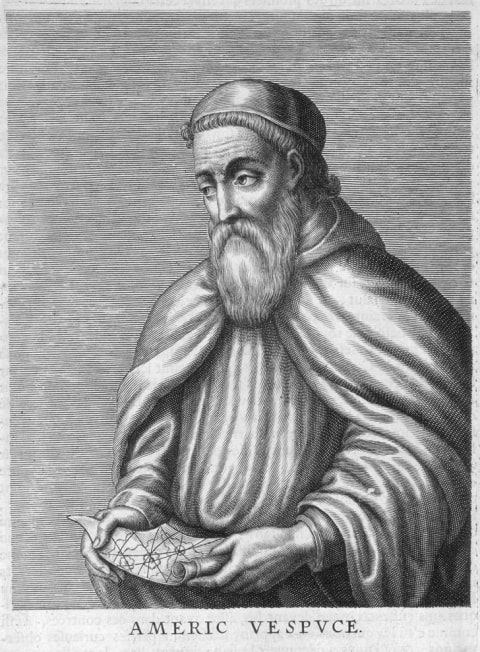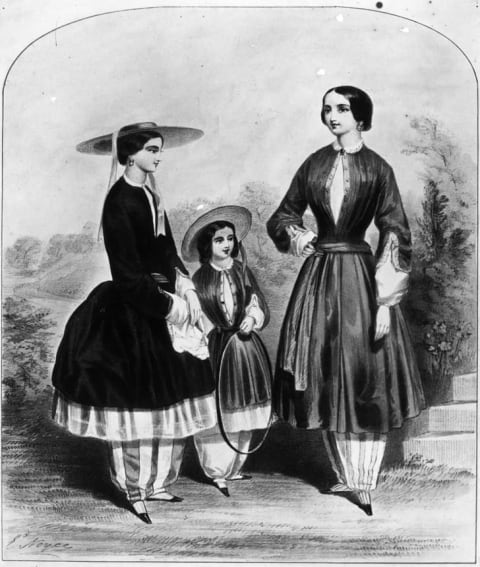6 Eponyms Named After the Wrong Person
Having something named after you is the ultimate accomplishment for any inventor, mathematician, scientist, or researcher. Unfortunately, the credit for an invention or discovery does not always go to the correct person—senior colleagues sometimes snatch the glory, fakers pull the wool over people's eyes, or the fickle general public just latches onto the wrong name.
1. SALMONELLA (OR SMITHELLA?)
In 1885, while investigating common livestock diseases at the Bureau of Animal Industry in Washington, D.C., pathologist Theobald Smith first isolated the salmonella bacteria in pigs suffering from hog cholera. Smith’s research finally identified the bacteria responsible for one of the most common causes of food poisoning in humans. Unfortunately, Smith’s limelight-grabbing supervisor, Daniel E. Salmon, insisted on taking sole credit for the discovery. As a result, the bacteria was named after him. Don’t feel too sorry for Theobald Smith, though: He soon emerged from Salmon’s shadow, going on to make the important discovery that ticks could be a vector in the spread of disease, among other achievements.
2. AMERICA (OR COLUMBIANA?)

Florentine explorer Amerigo Vespucci (1451–1512) claimed to have made numerous voyages to the New World, the first in 1497, before Columbus. Textual evidence suggests Vespucci did take part in a number of expeditions across the Atlantic, but generally does not support the idea that he set eyes on the New World before Columbus. Nevertheless, Vespucci’s accounts of his voyages—which today read as far-fetched—were hugely popular and translated into many languages. As a result, when German cartographer Martin Waldseemüller was drawing his map of the Novus Mundi (or New World) in 1507 he marked it with the name "America" in Vespucci’s honor. He later regretted the choice, omitting the name from future maps, but it was too late, and the name stuck.
3. BLOOMERS (OR MILLERS?)

Dress reform became a big issue in mid-19th century America, when women were restricted by long, heavy skirts that dragged in the mud and made any sort of physical activity difficult. Women’s rights activist Elizabeth Smith Miller was inspired by traditional Turkish dress to begin wearing loose trousers gathered at the ankle underneath a shorter skirt. Miller’s new outfit immediately caused a splash, with some decrying it as scandalous and others inspired to adopt the garb.
Amelia Jenks Bloomer was editor of the women’s temperance journal The Lily, and she took to copying Miller’s style of dress. She was so impressed with the new freedom it gave her that she began promoting the “reform dress” in her magazine, printing patterns so others might make their own. Bloomer sported the dress when she spoke at events and soon the press began to associate the outfit with her, dubbing it “Bloomer’s costume.” The name stuck.
4. GUILLOTINE (OR LOUISETTE?)

Execution machines had been known prior to the French Revolution, but they were refined after Paris physician and politician Dr. Joseph-Ignace Guillotin suggested they might be a more humane form of execution than the usual methods (hanging, burning alive, etc.). The first guillotine was actually designed by Dr. Antoine Louis, Secretary of the Academy of Surgery, and was known as a louisette. The quick and efficient machine was quickly adopted as the main method of execution in revolutionary France, and as the bodies piled up the public began to refer to it as la guillotine, for the man who first suggested its use. Guillotin was very distressed at the association, and when he died in 1814 his family asked the French government to change the name of the hated machine. The government refused and so the family changed their name instead to escape the dreadful association.
5. BECHDEL TEST (OR WALLACE TEST?)

The Bechdel Test is a tool to highlight gender inequality in film, television, and fiction. The idea is that in order to pass the test, the movie, show, or book in question must include at least one scene in which two women have a conversation that isn’t about a man. The test was popularized by the cartoonist Alison Bechdel in 1985 in her comic strip “Dykes to Watch Out For,” and has since become known by her name. However, Bechdel asserts that the idea originated with her friend Lisa Wallace (and was also inspired by the writer Virginia Woolf), and she would prefer for it to be known as the Bechdel-Wallace test.
6. STIGLER’S LAW OF EPONYMY (OR MERTON’S LAW?)
Influential sociologist Robert K. Merton suggested the idea of the “Matthew Effect” in a 1968 paper noting that senior colleagues who are already famous tend to get the credit for their junior colleagues’ discoveries. (Merton named his phenomenon [PDF] after the parable of talents in the Gospel of Matthew, in which wise servants invest money their master has given them.)
Merton was a well-respected academic, and when he was due to retire in 1979, a book of essays celebrating his work was proposed. One person who contributed an essay was University of Chicago professor of statistics Stephen Stigler, who had corresponded with Merton about his ideas. Stigler decided to pen an essay that celebrated and proved Merton’s theory. As a result, he took Merton’s idea and created Stigler’s Law of Eponymy, which states that “No scientific discovery is named after its original discoverer”—the joke being that Stigler himself was taking Merton’s own theory and naming it after himself. To further prove the rule, the “new” law has been adopted by the academic community, and a number of papers and articles have since been written on "Stigler’s Law."
